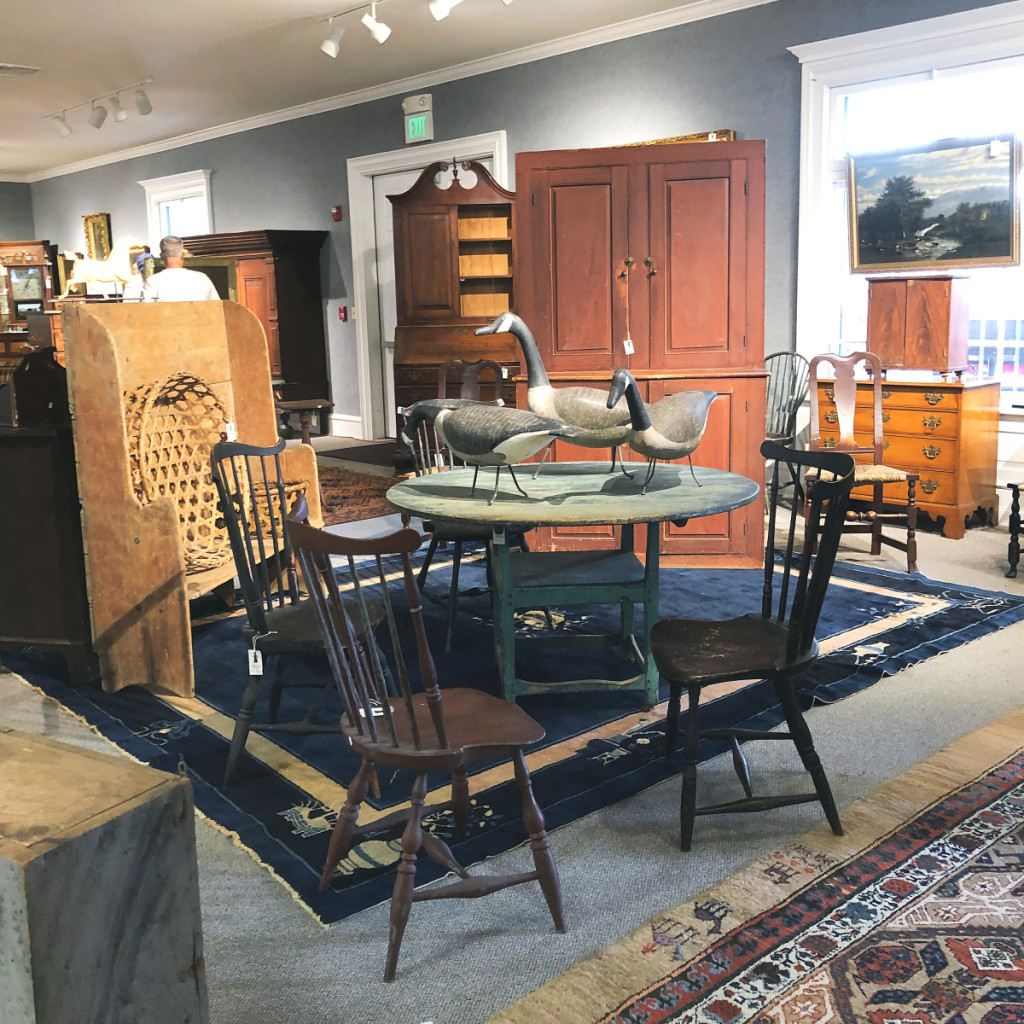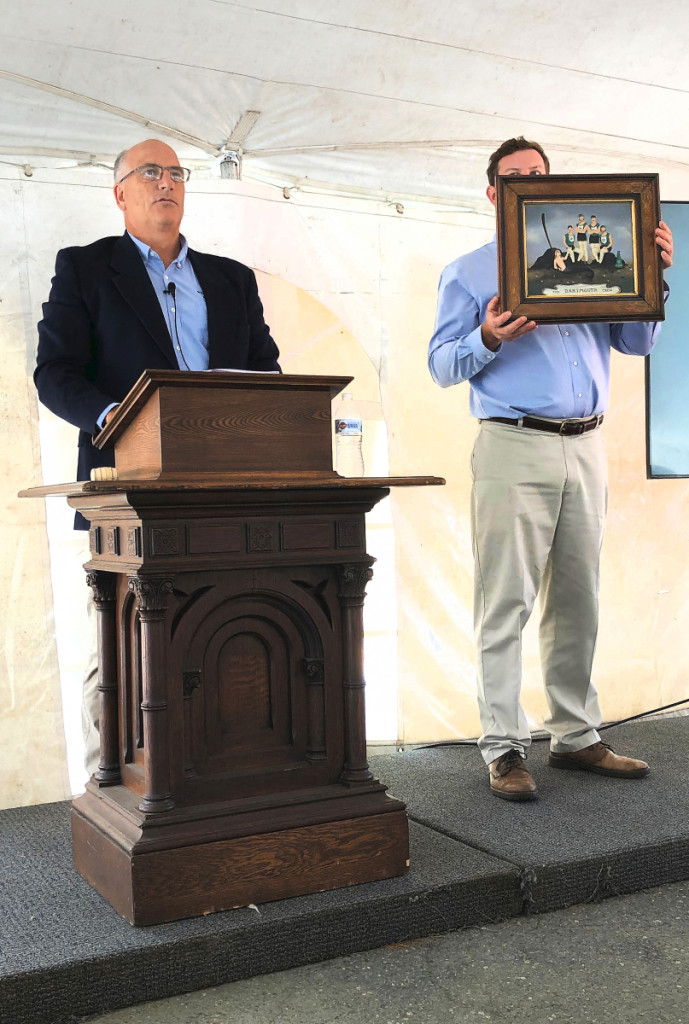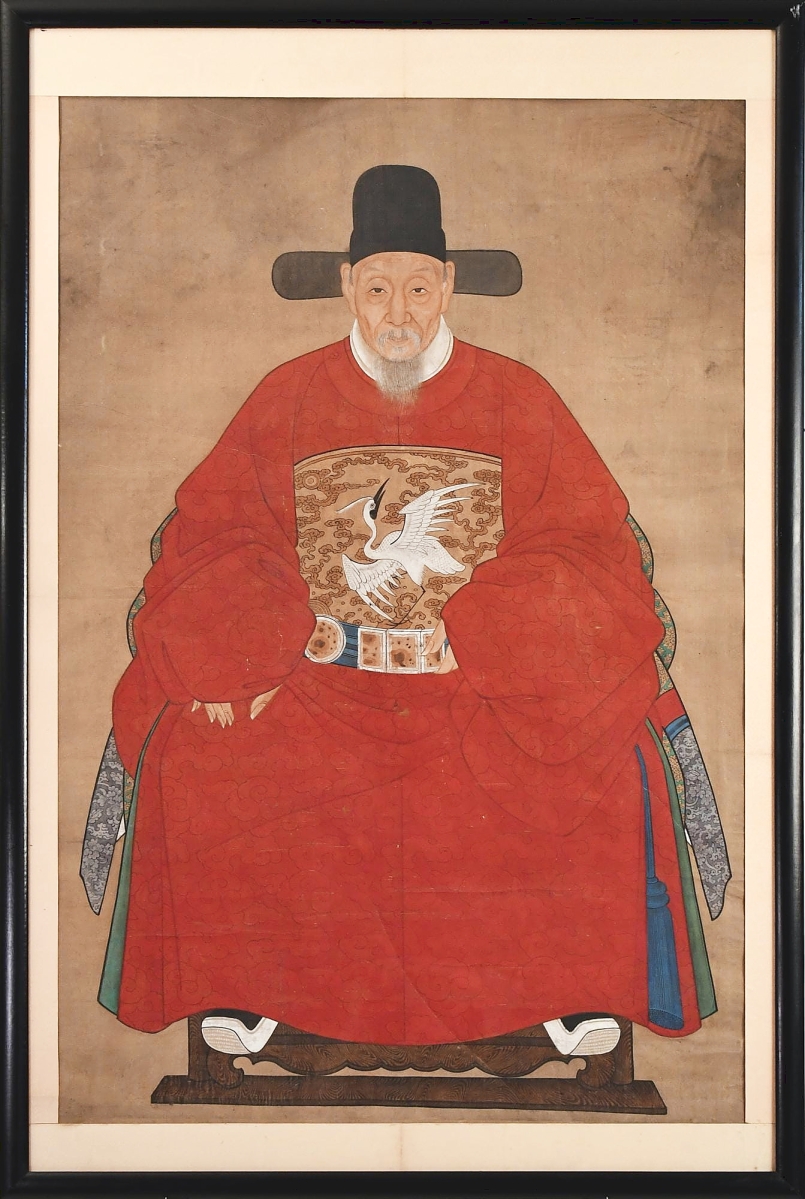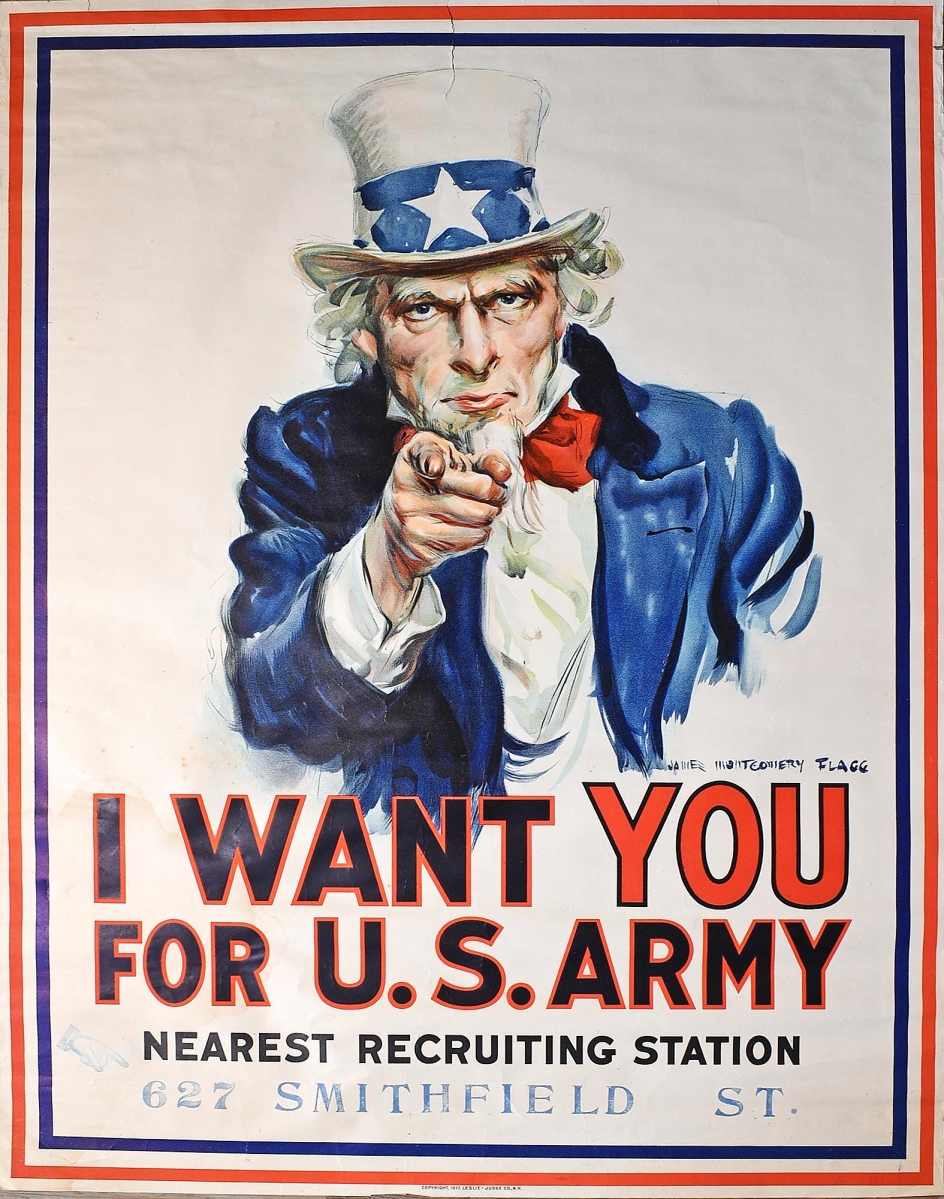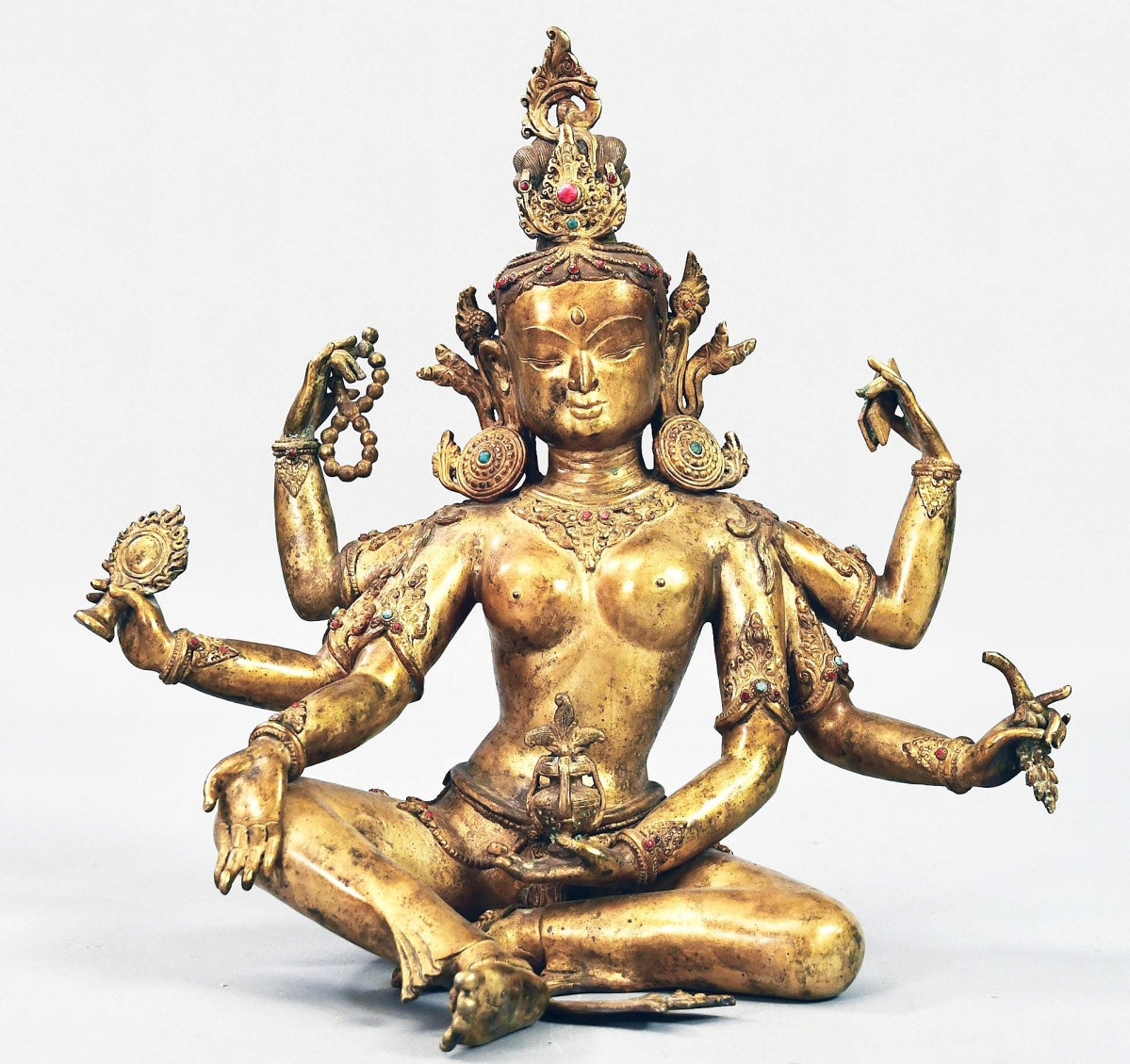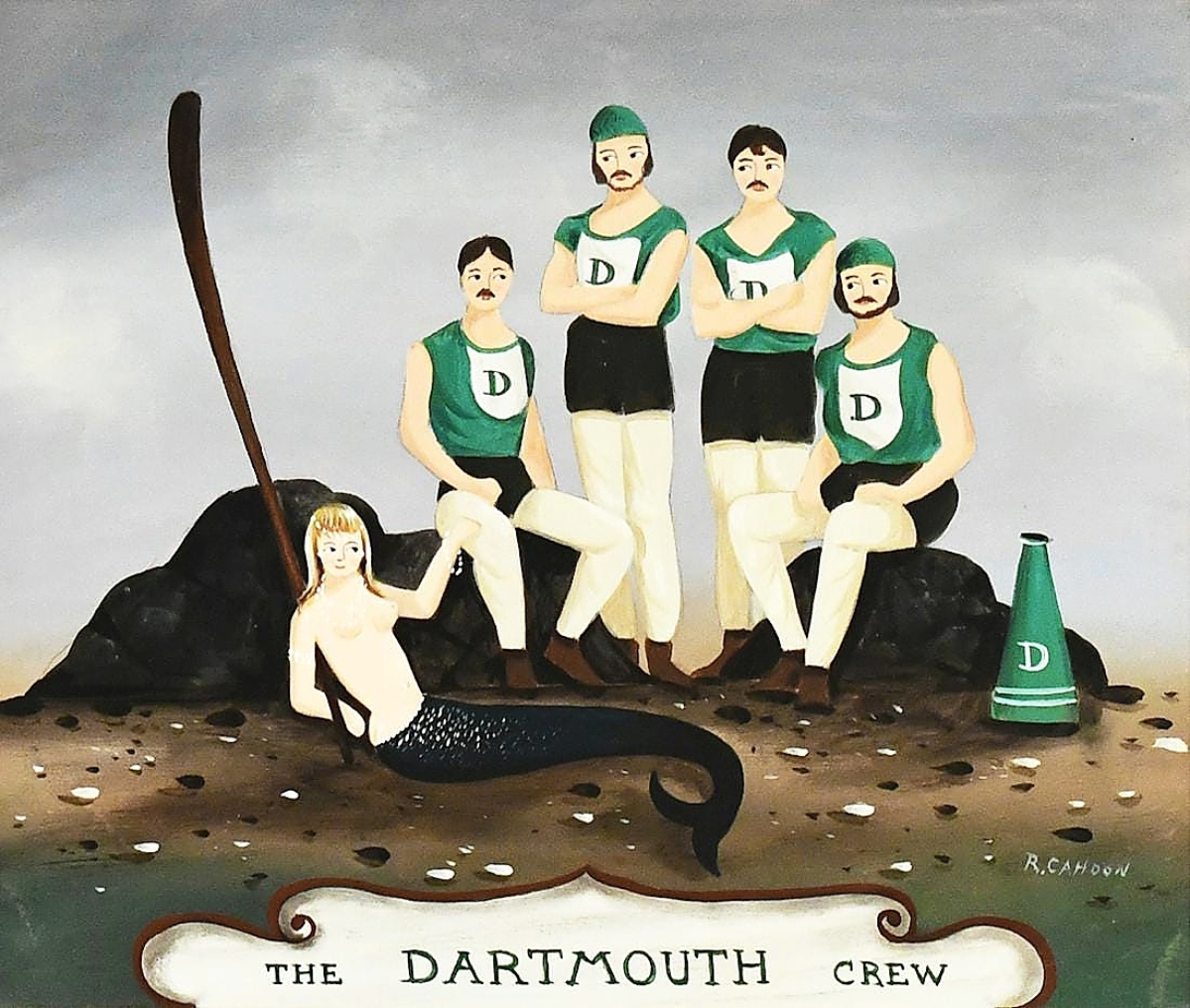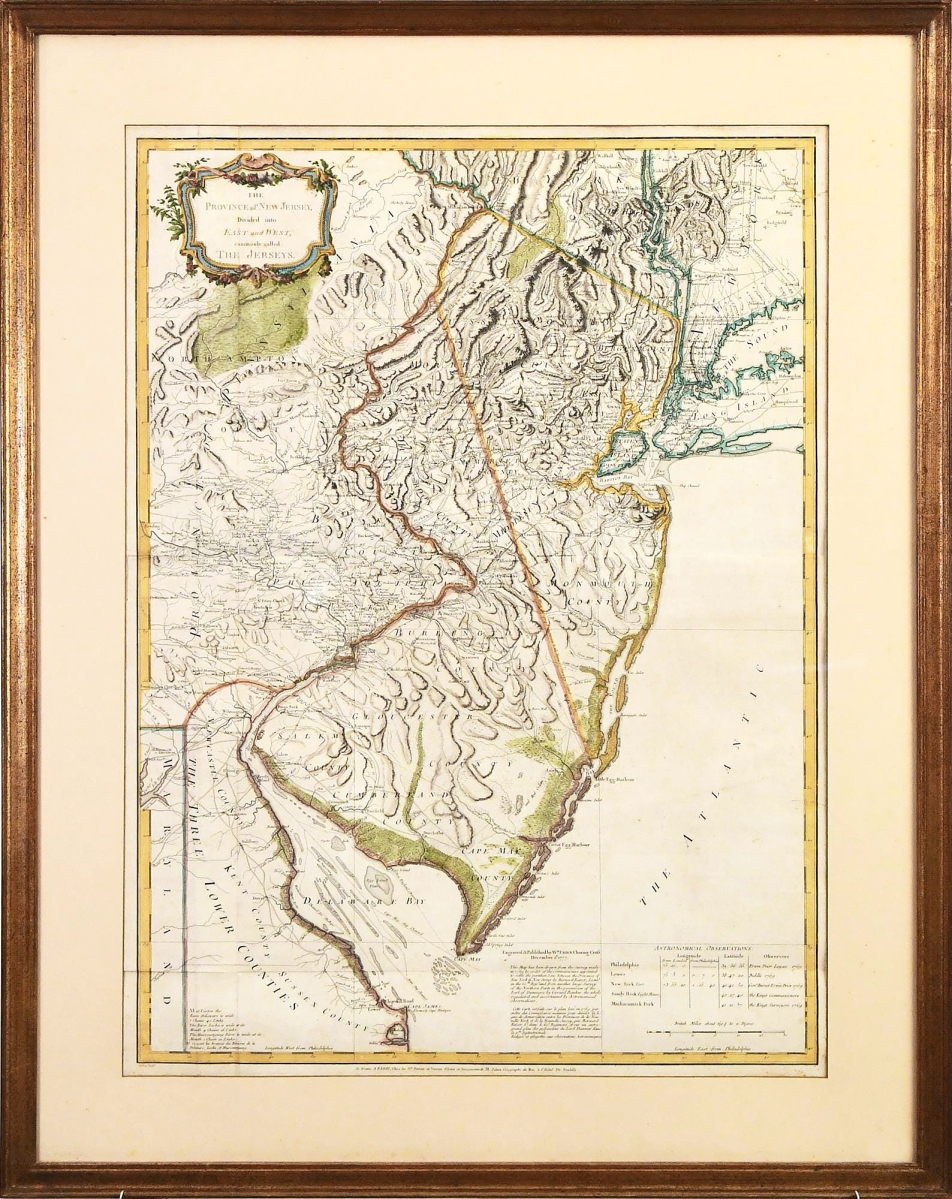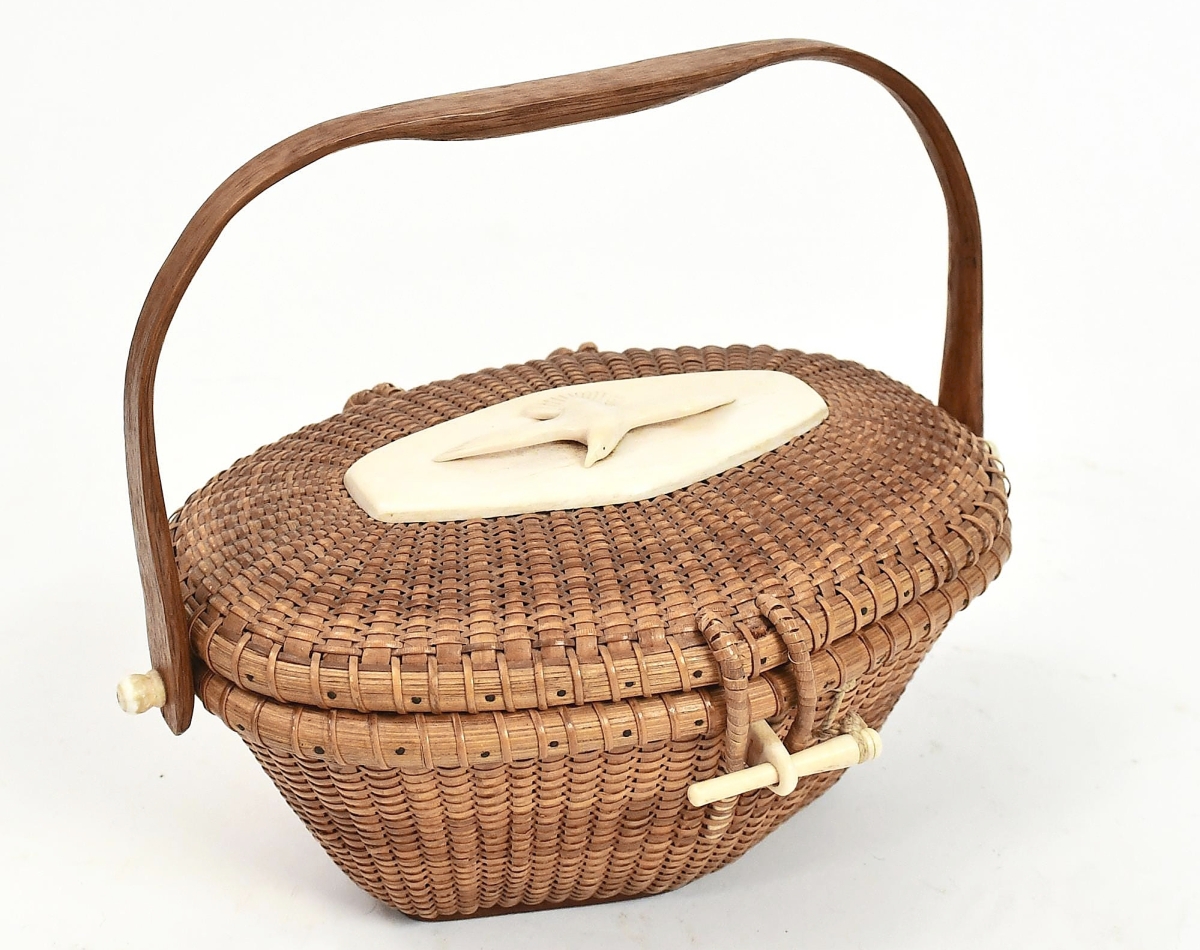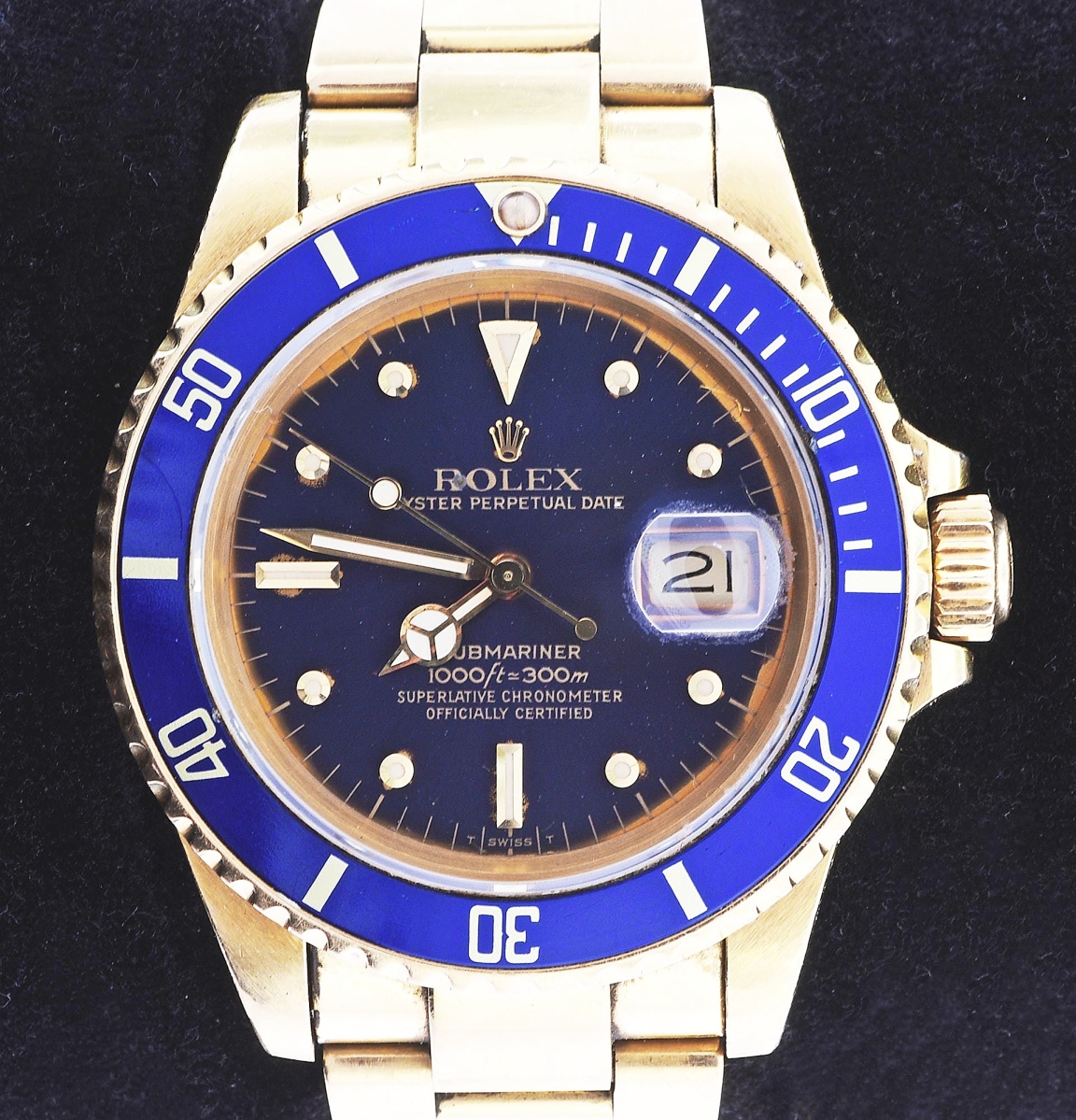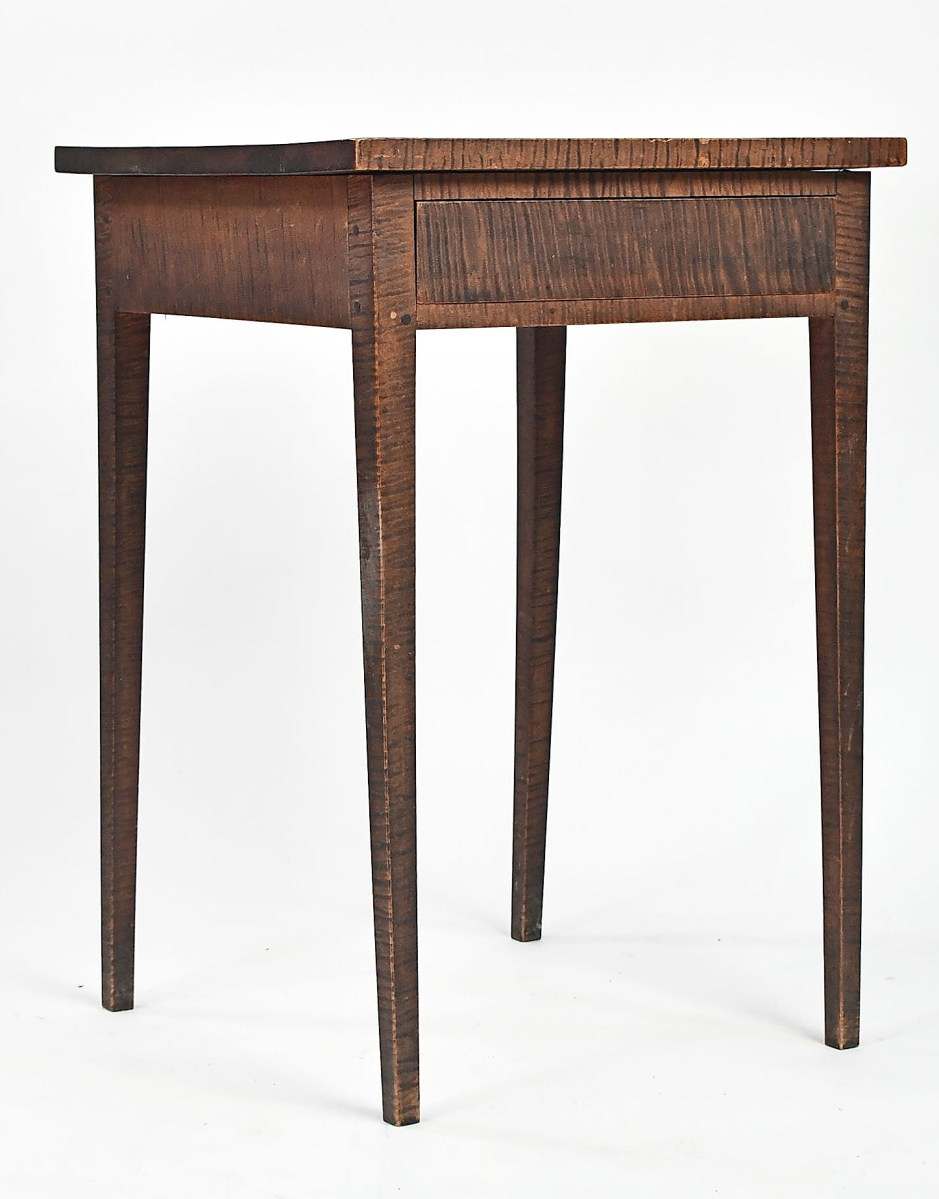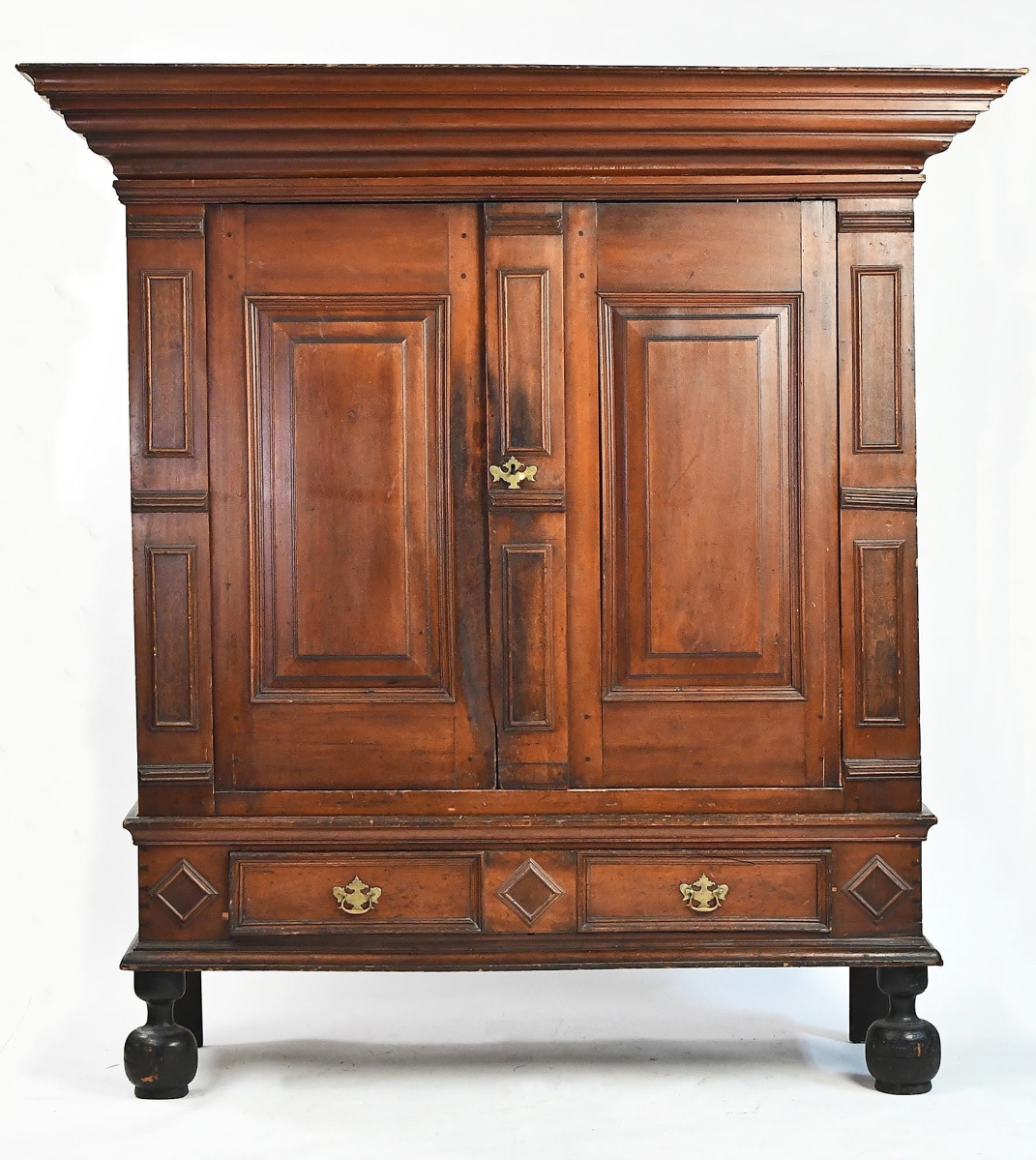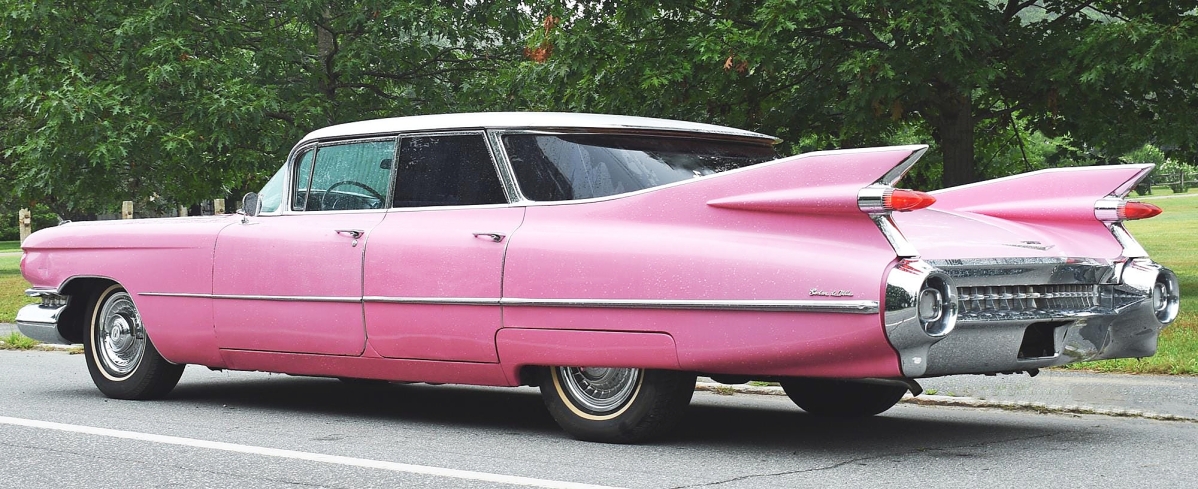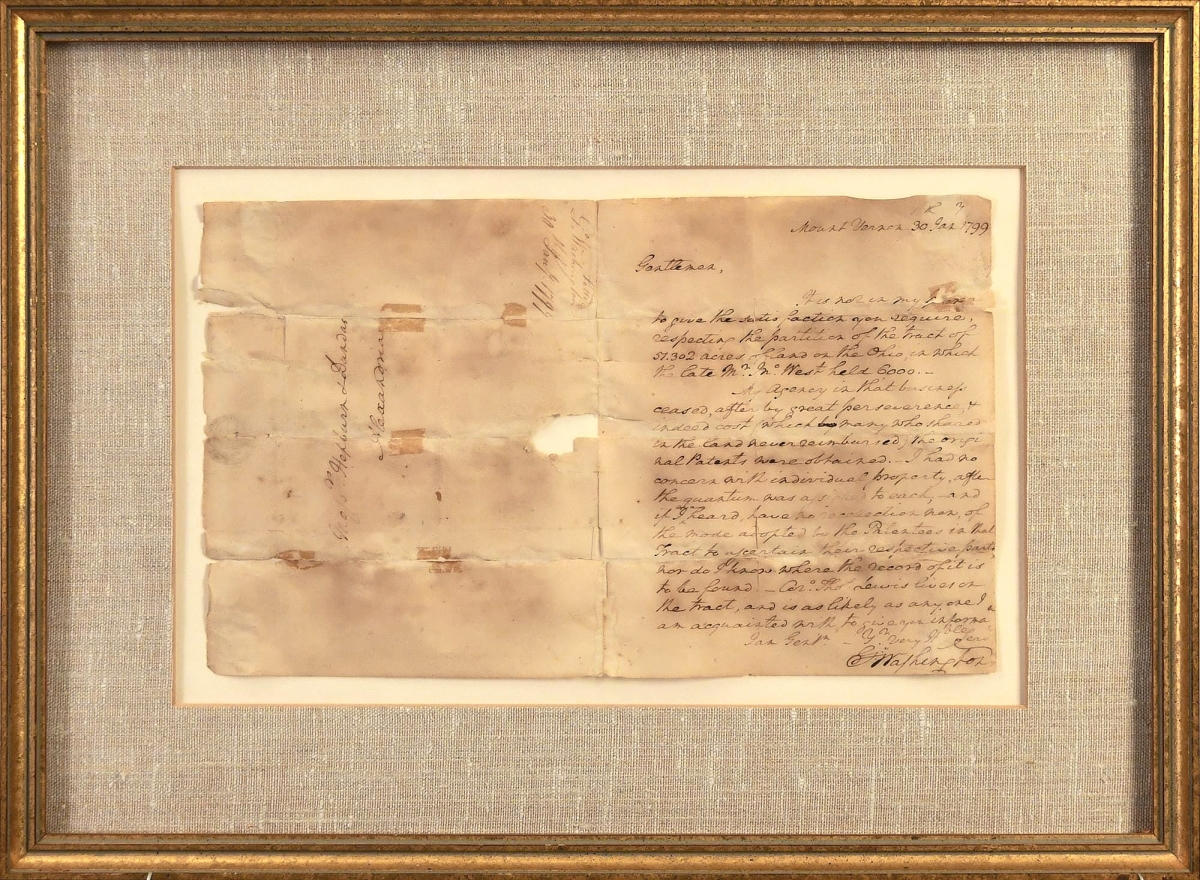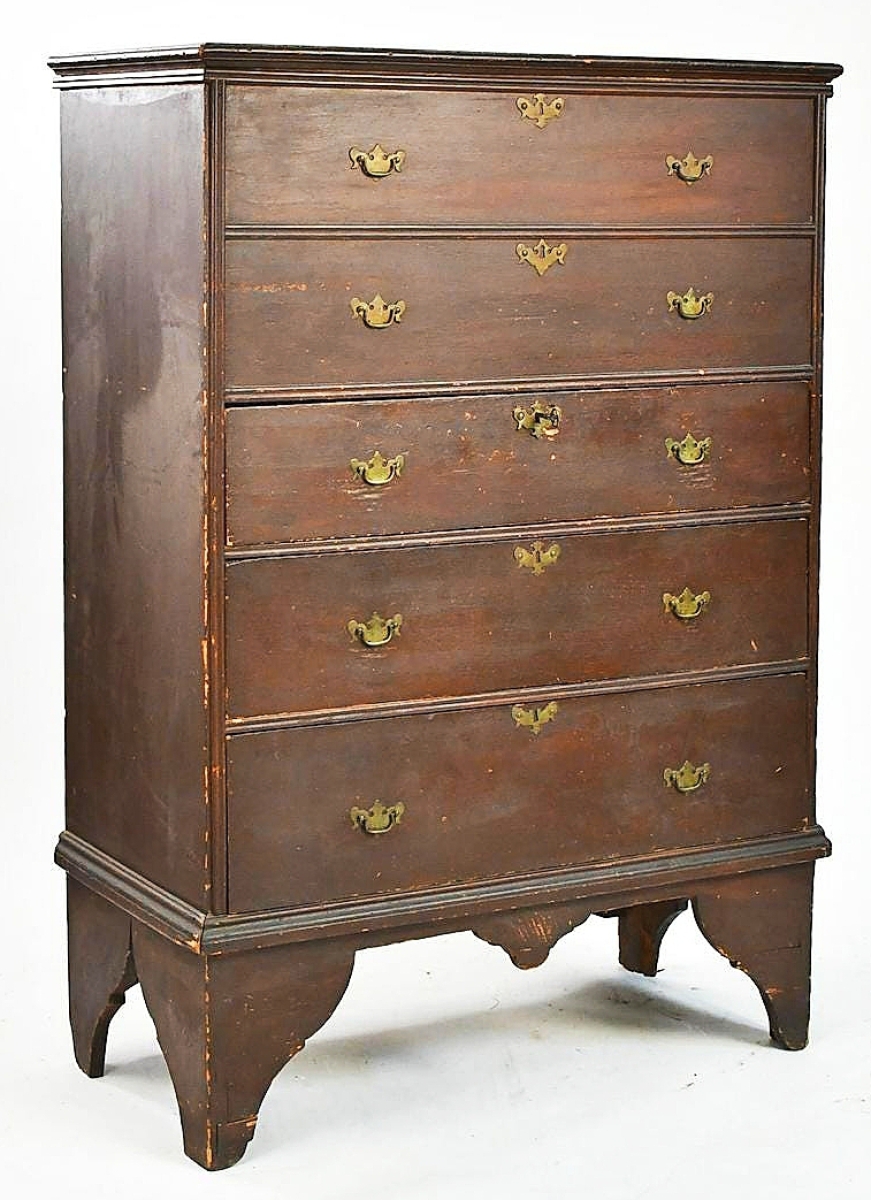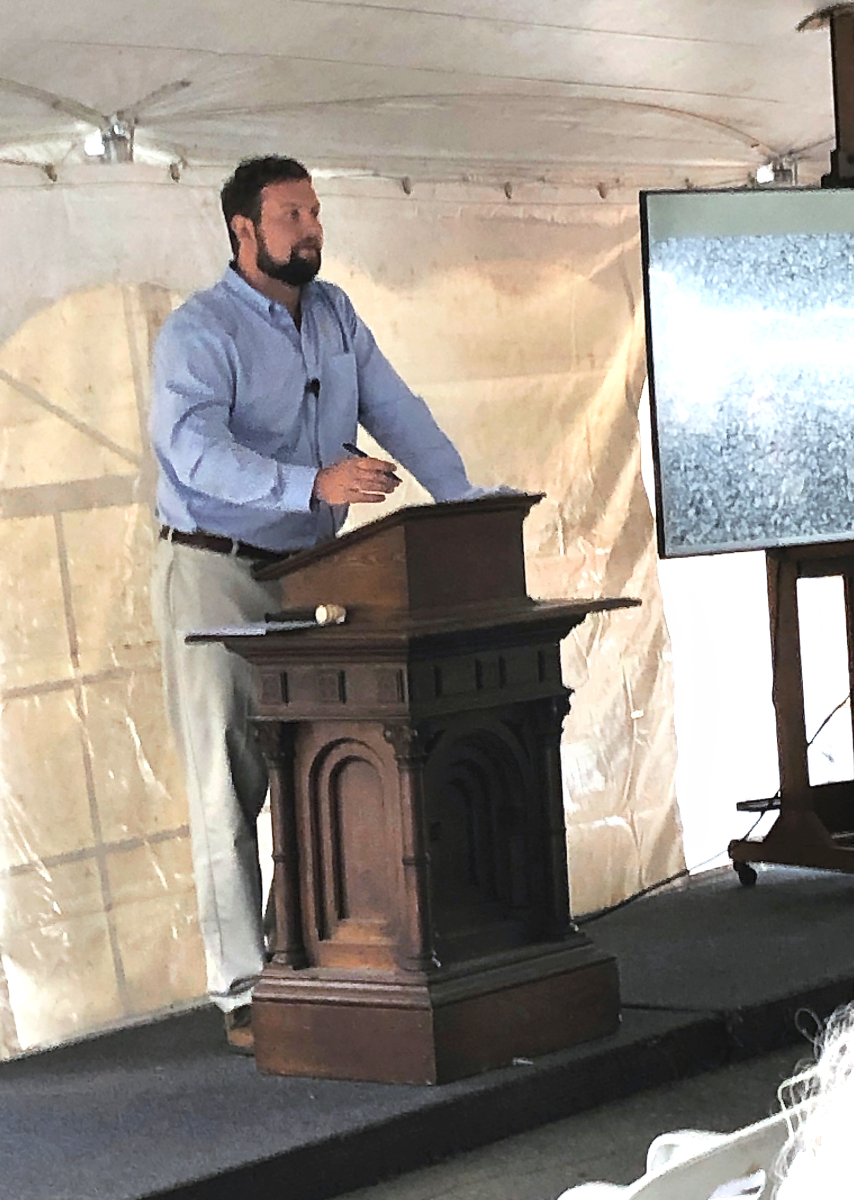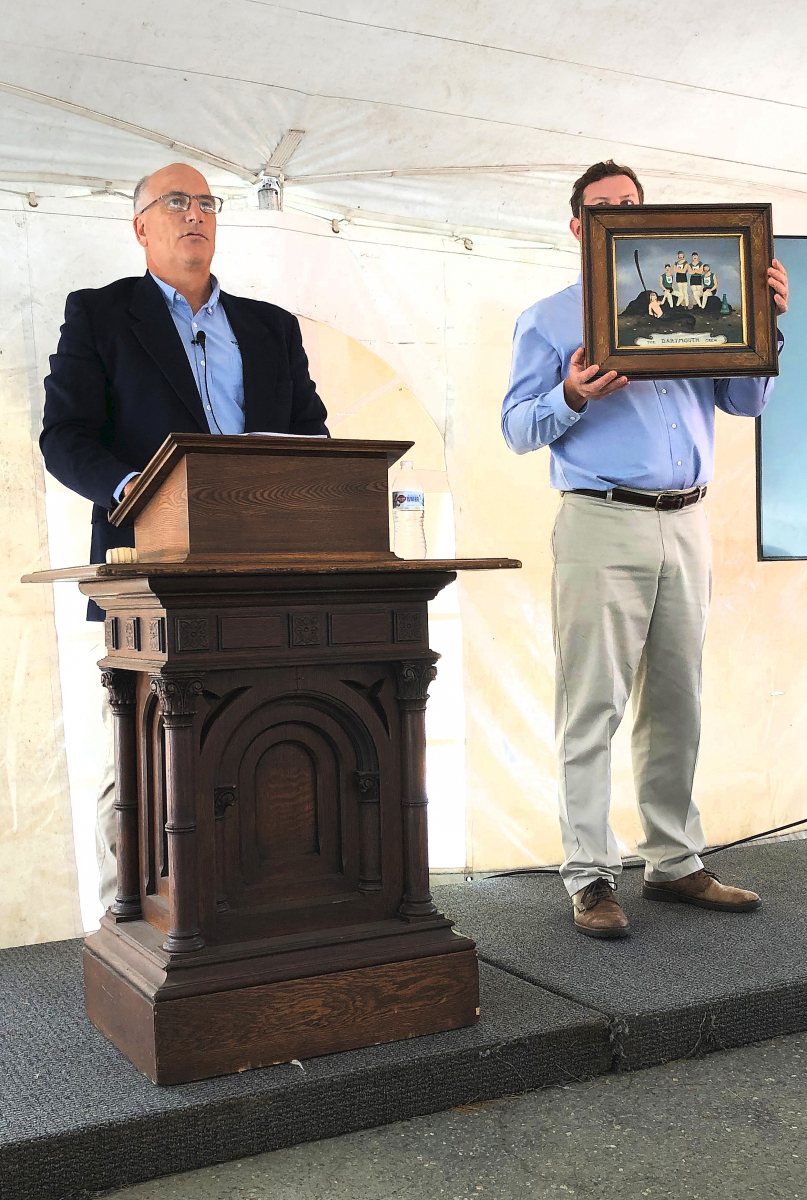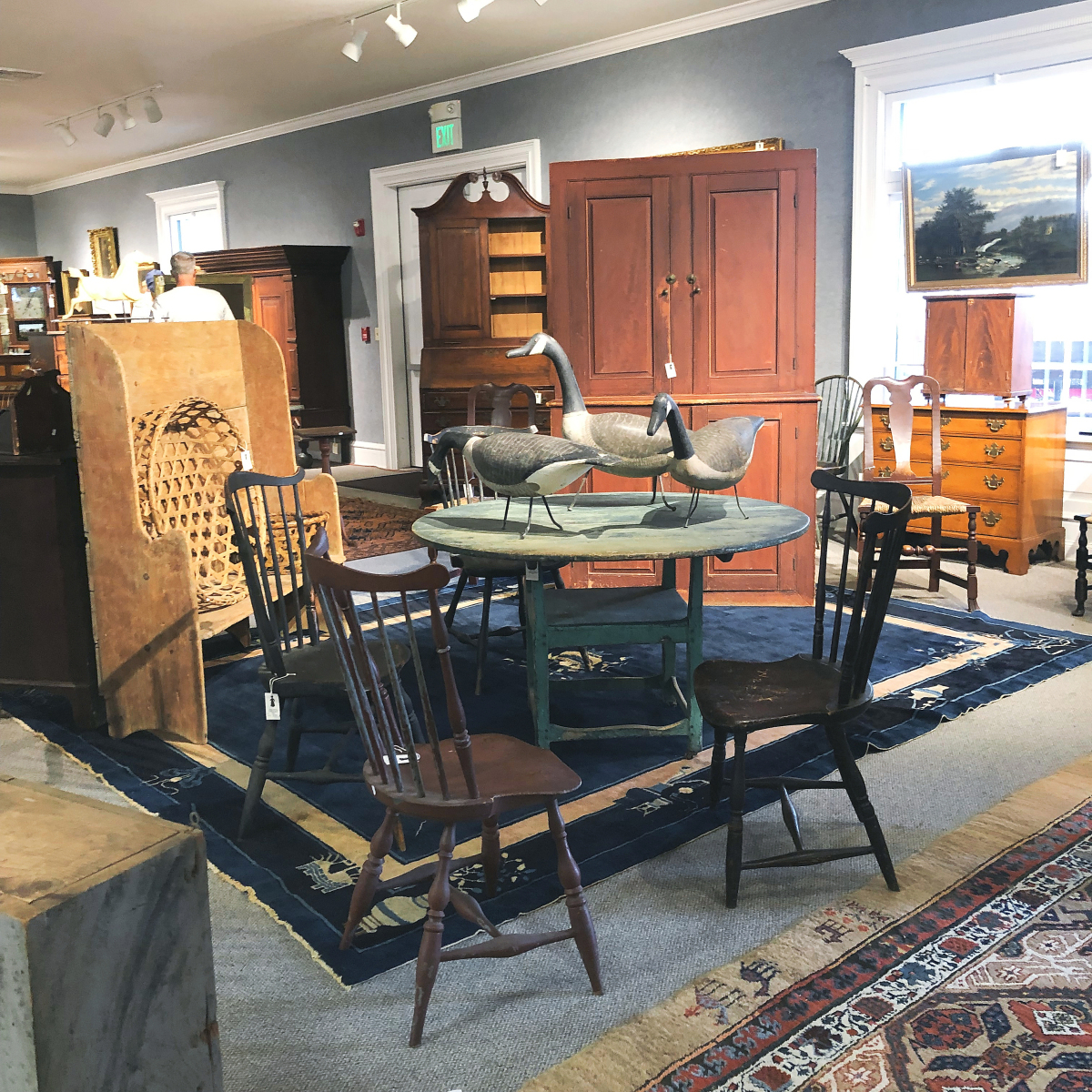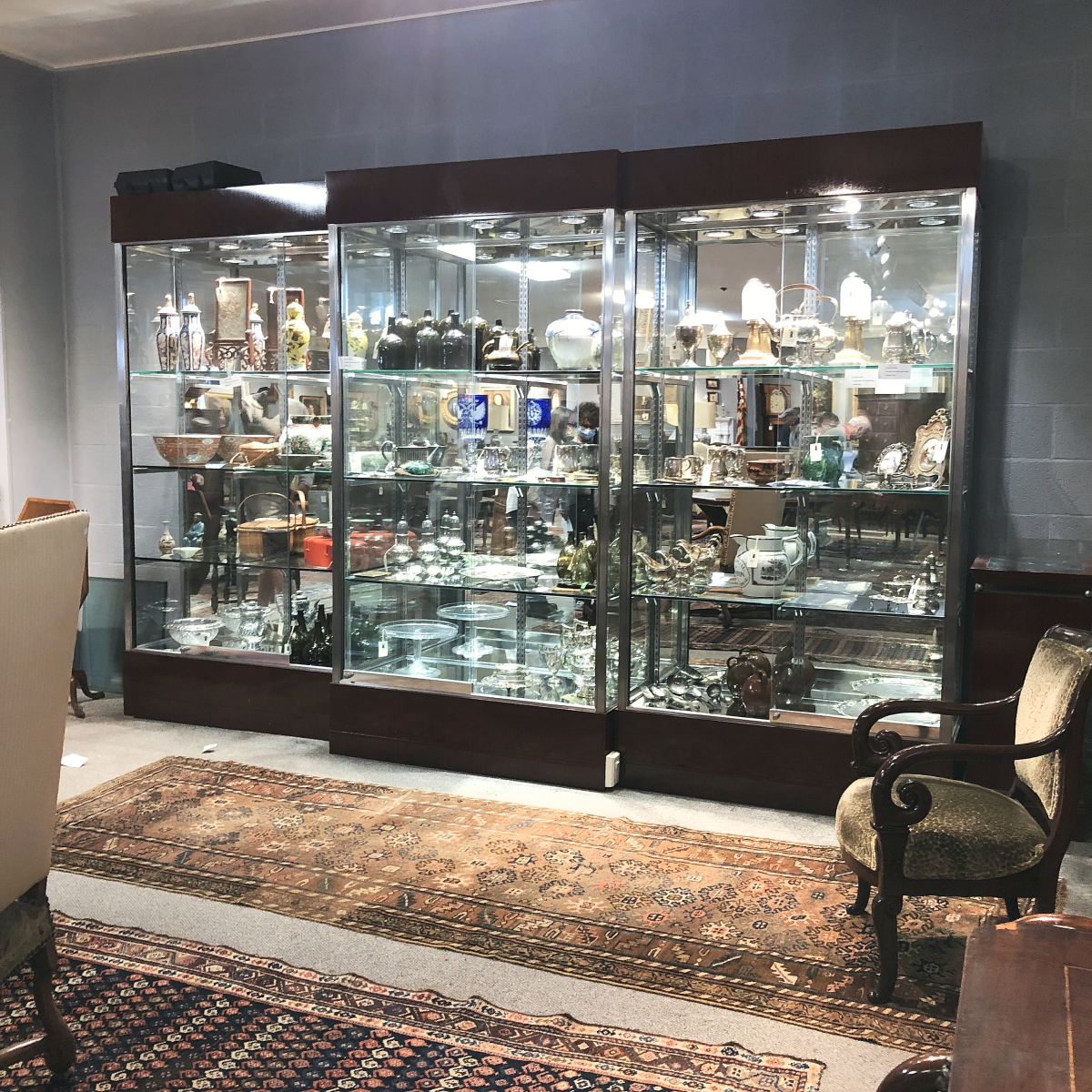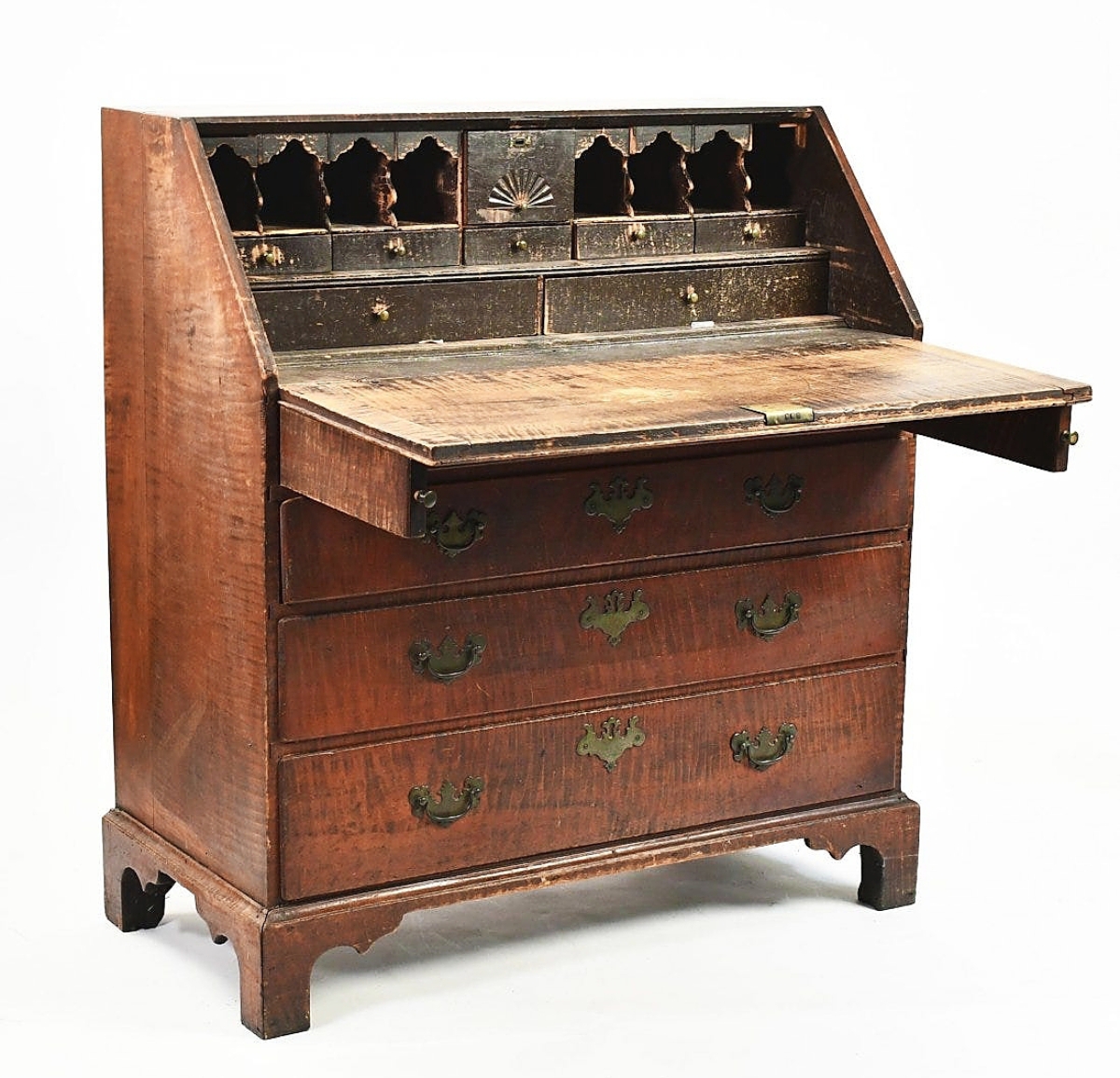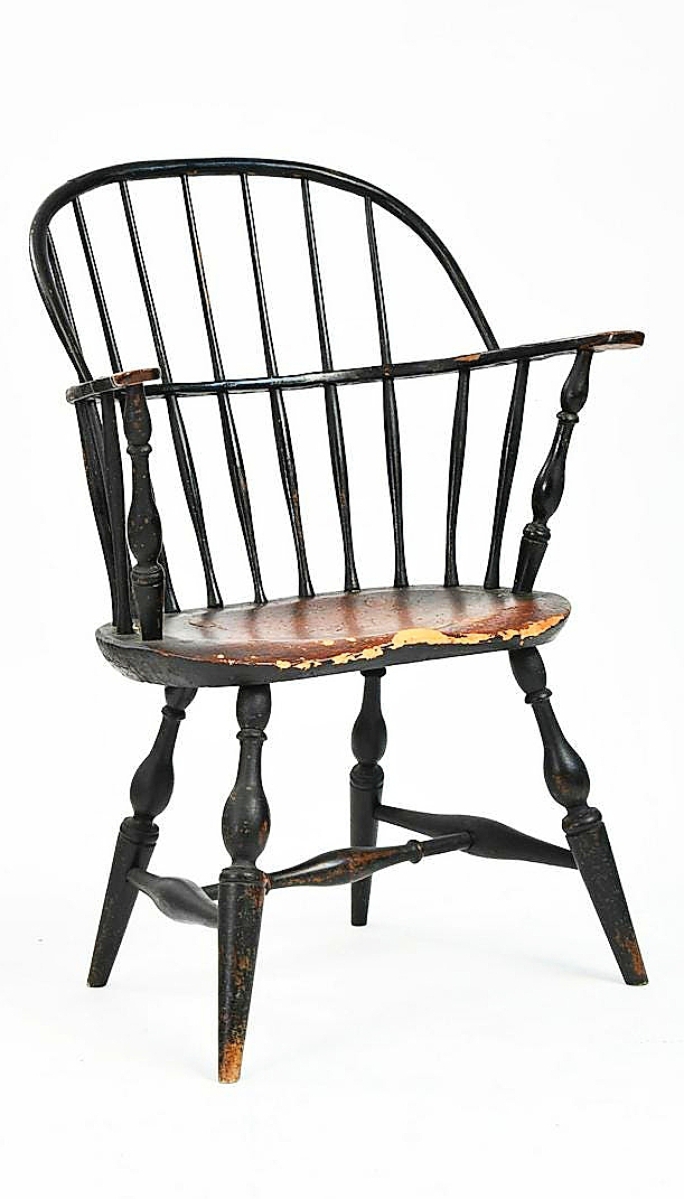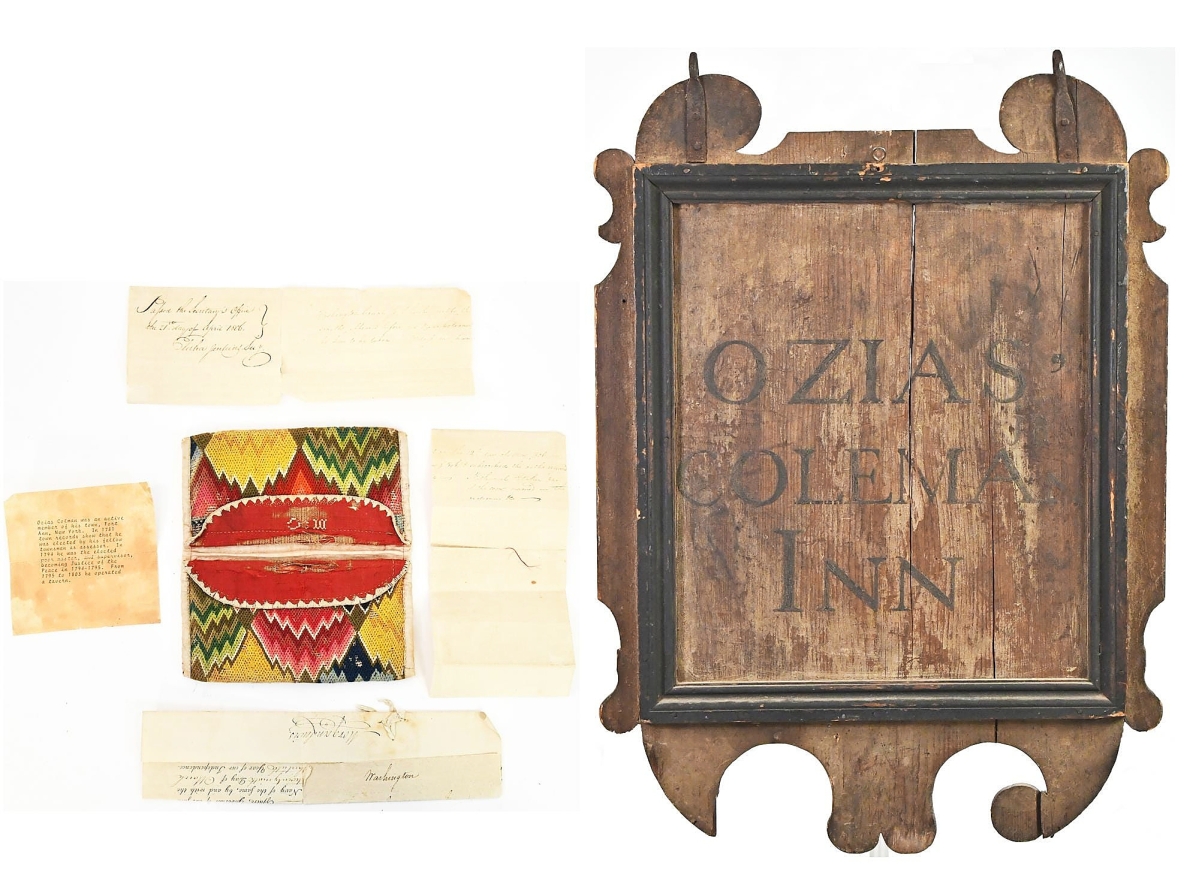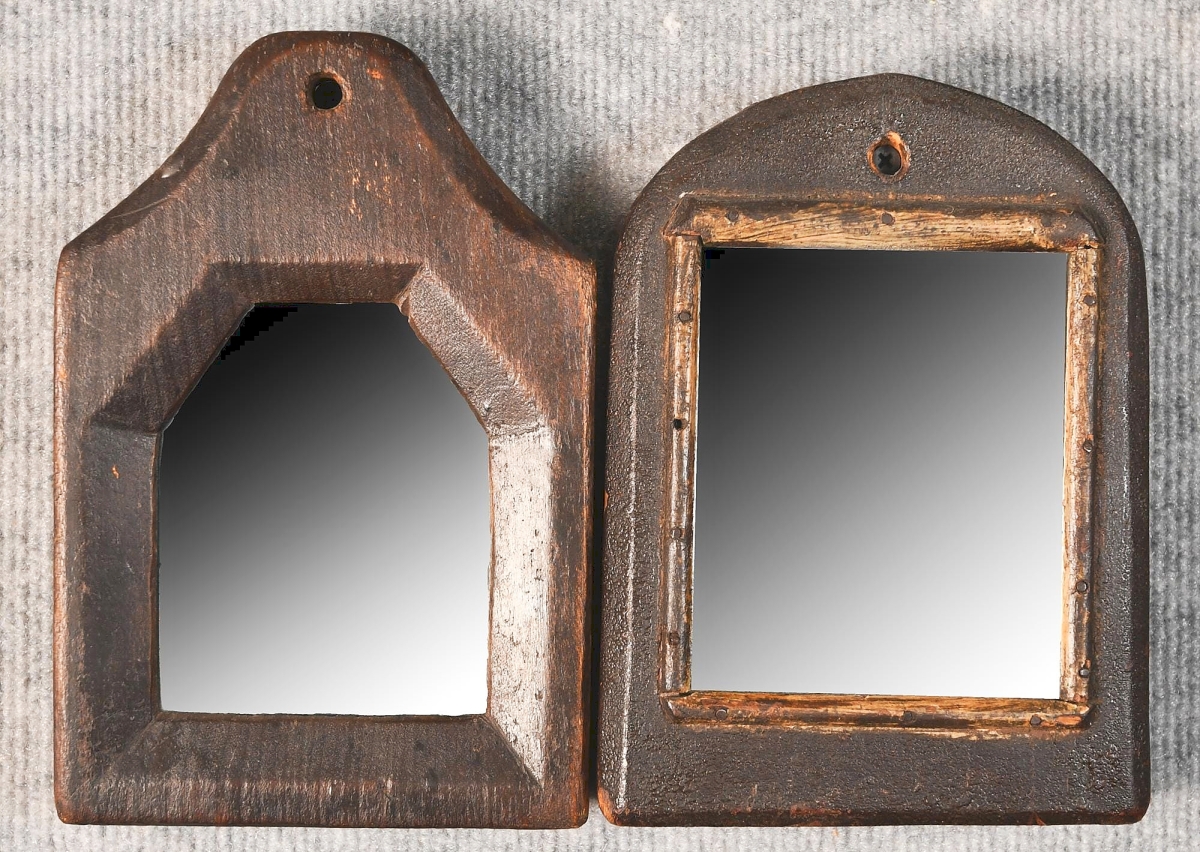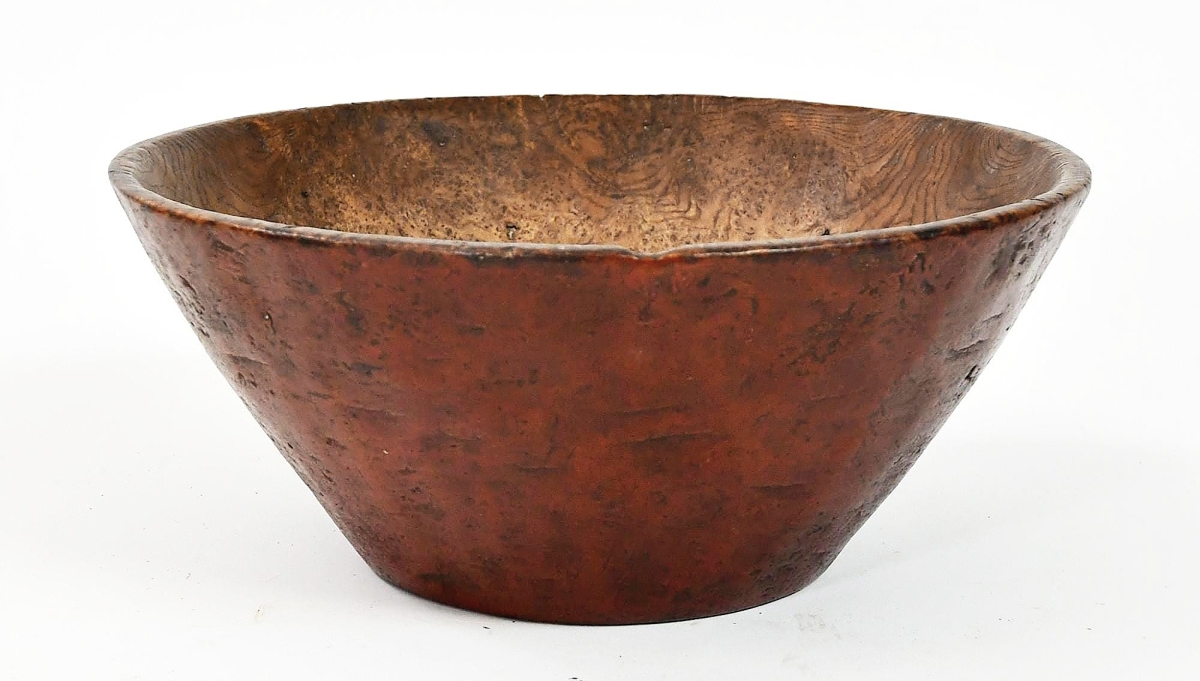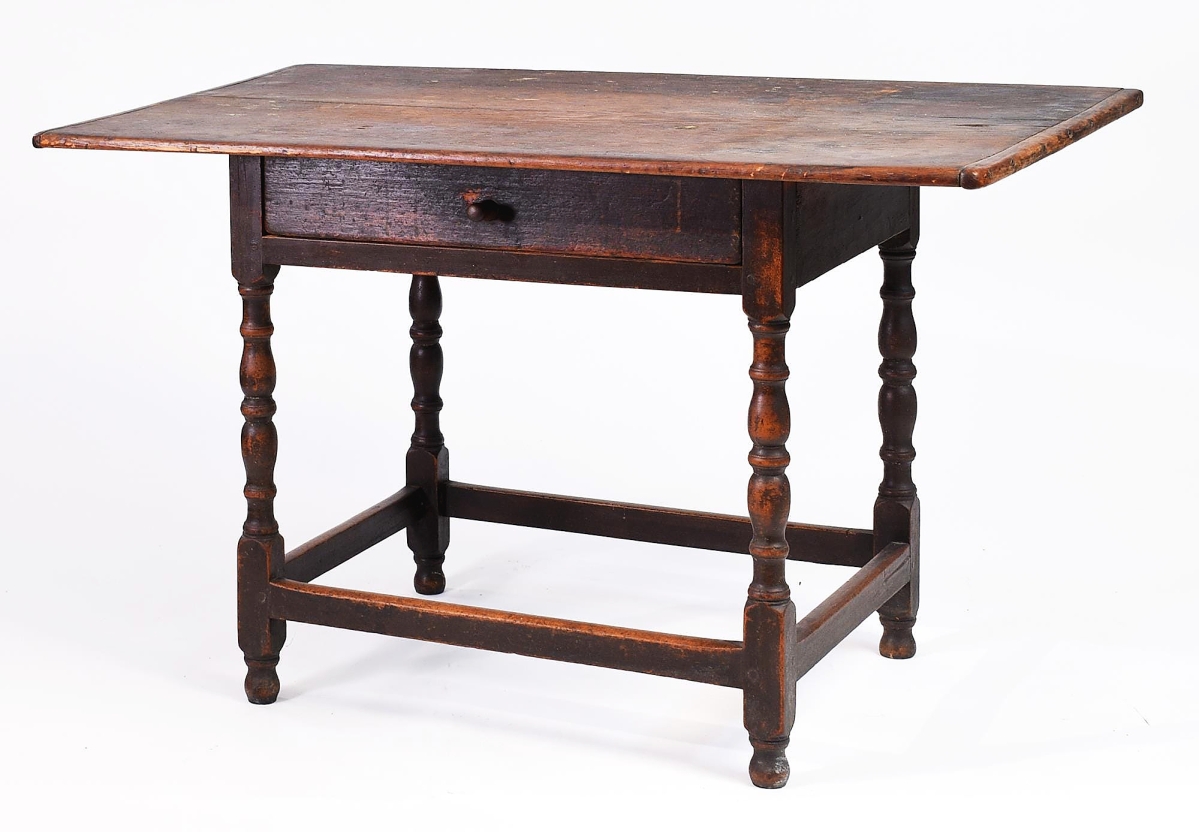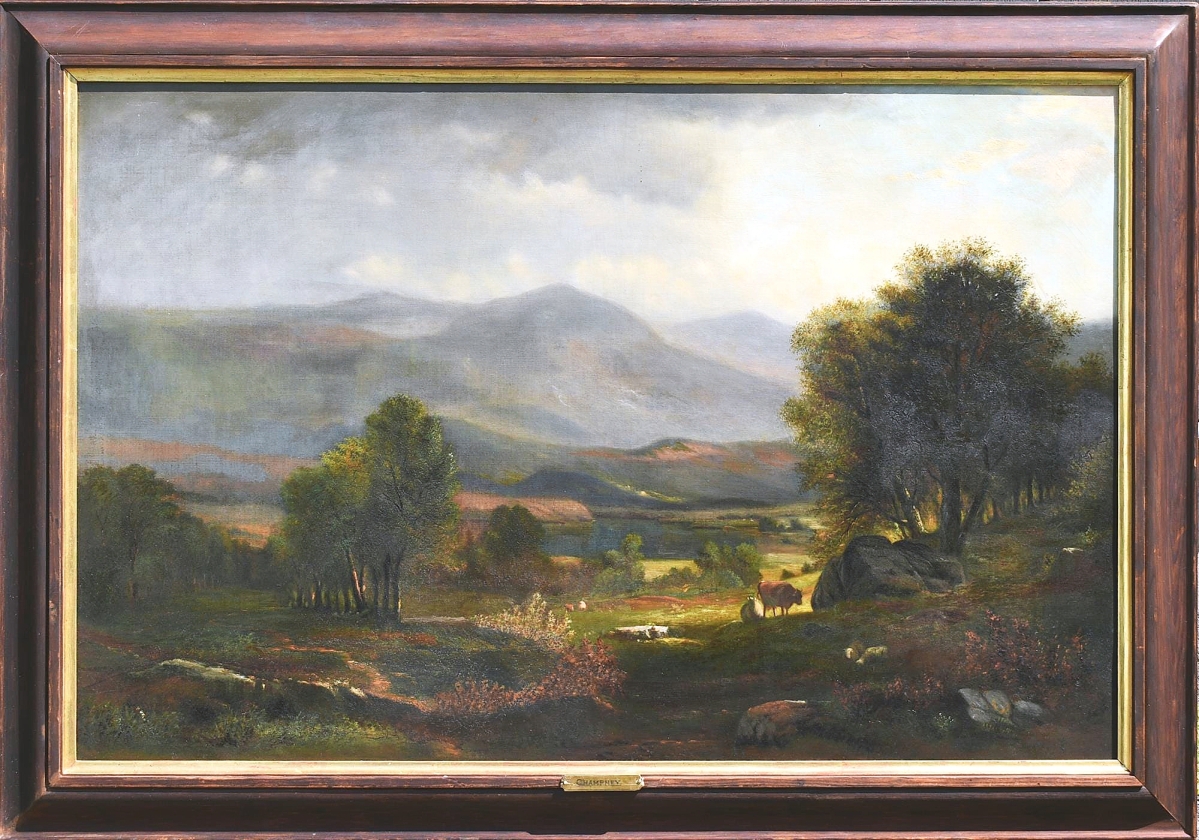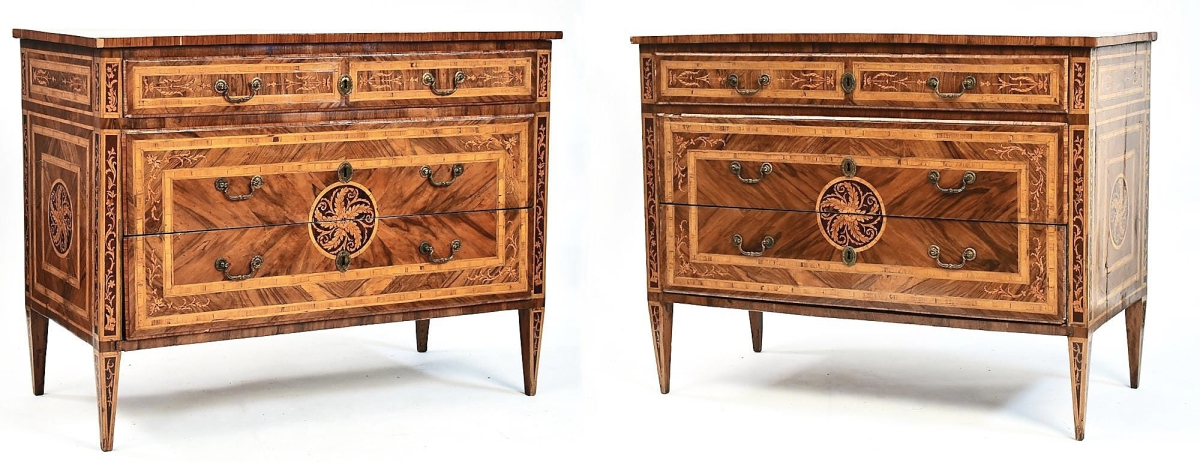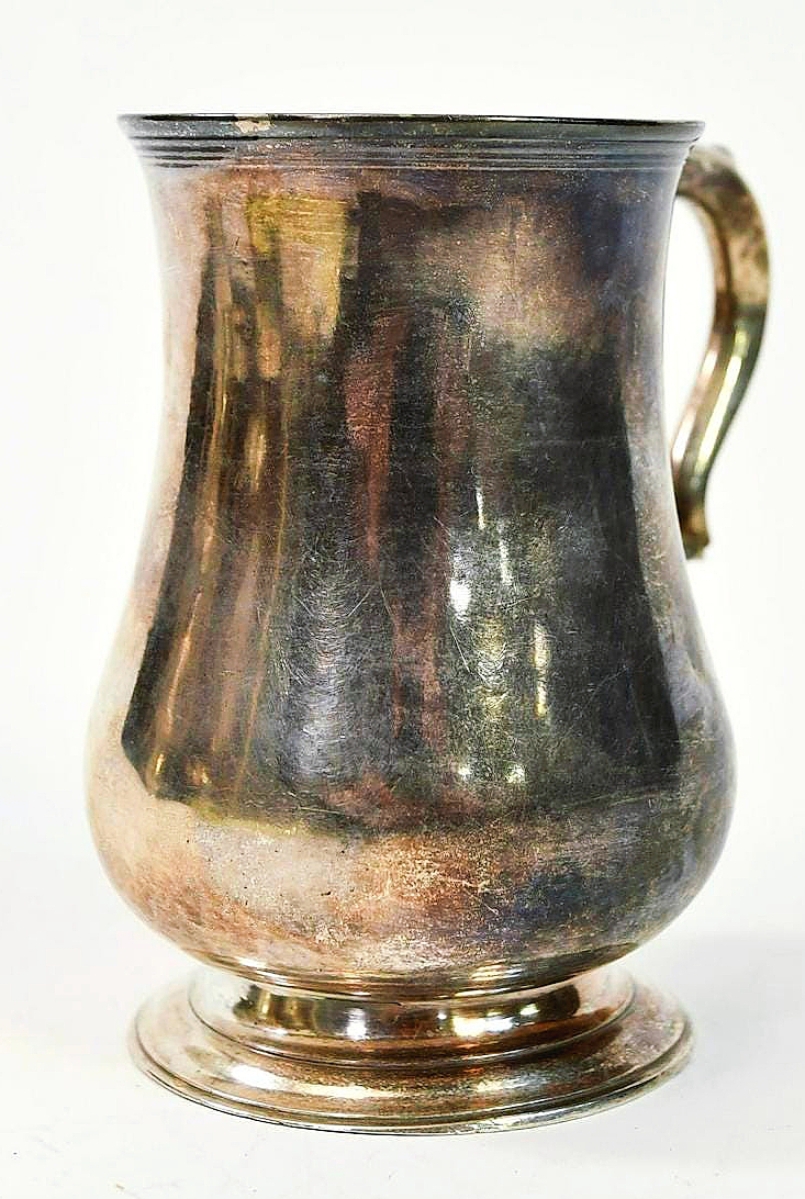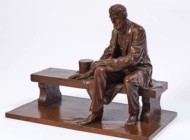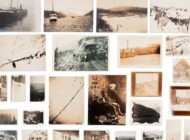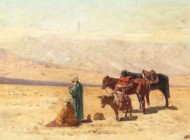Review and Onsite Photos by Rick Russack
PLAINFIELD, N.H. – Bill Smith started his September 11 sale with a moment of silence commemorating the events of 9/11. He then took a moment to promote an upcoming show in Norwich, Vt., and shops in other nearby towns. Then he got down to business. The second lot he sold indicated the kind of day it might be. It was an exceptional red-painted burl bowl with a good provenance and it sold for $10,300, more than three times the estimate. Nine of the first ten lots exceeded estimates. More than 230 lots in the sale were from the collection of Richard McGovern, who had restored a nearby historic home and filled it with fine early furniture and Americana, much of which had not been on the market in years.
The sale was conducted live, under two large tents, three online platforms were in use, several phone lines were chattering and there were numerous absentee bids. The attendance wasn’t what it was in the days when Smith did not use the internet but there were still 100-150 potential bidders present. At the start of the sale, Smith asked those present how many were first-time attendees and several hands went up. The sale grossed just under $909,000.
In addition to early furniture, the auction included a wide selection of jewelry, American and English silver, good Oriental rugs, vintage automobiles, a George Washington signed letter, early maps, Asian items, some European furniture, American and European paintings, garden furniture and accessories, early woodenware and much more. Topping the sale were two Rolex watches, which, if taken together, brought $43,660.
The highest grossing item in the sale was a man’s 18K yellow gold Rolex Submariner wristwatch with its original 18K yellow gold oyster band. The purple haze dial, 40mm in diameter, had a blue ring. Included were the original box and papers, and Smith guaranteed its authenticity. It finished at $29,500. Another Rolex, a stainless-steel man’s GMT Master Pepsi watch with a 40mm dial, brought $14,160. There were numerous other pieces of jewelry, including a lady’s 18K yellow gold bracelet, 28mm wide, set with approximately 1.50 total carat weight of rubies and diamonds, which weighed 99.1 grams. It earned $4,425, and an emerald and diamond ring set in platinum, with a GIA certification sold for $3,540.
While it was probably the early furniture and Americana that drew the crowd, the vintage automobiles have to be mentioned. Although not with its original paint job, you couldn’t miss the iconic four-door hard-top 1959 Cadillac El Dorado parked alongside the auction tent. That year the car had the upswept tail fins, double tail lights and distinctive grill. This model was more than 18 feet long and weighed more than 5,000 pounds. It was in running condition but sold as-is. It had been repainted a bright pink, and its actual mileage was uncertain. It came with extensive records and wound up selling for $16,520, more than twice the estimate. There was also a 1977 red MGB convertible, dwarfed by the Cadillac. It had a four-speed manual transmission with 95,565 miles and sold for $3,540.
The collection of American furniture included choice pieces, many with original, untouched surfaces. Leading the selection was an untouched bird’s-eye maple red painted Chippendale slant front desk, circa 1780-1800. It had a step-down fan carved brown painted interior with four graduated drawers below on an applied bracket base and retained its original brass. It brought $20,060. Bringing $6,490, with an Israel Sack provenance, was a mahogany Eighteenth Century Massachusetts bowfront four-drawer chest.
Two early tavern tables each drew several competing bids, and each sold for prices far exceeding estimates. An Eighteenth Century New England William and Mary example sold for $10,620. It had a single long drawer, turned maple stretcher base and a single board pine top with bread board ends. In an early Spanish brown paint, it realized $10,620. Another early tavern table, this one circa 1800 with a two-board oval top, sausage-turned stretcher base and older charcoal paint, brought $6,490. Its provenance included Mary Aliss, who died in 1987. Surprising all, including Bill Smith, was a seemingly plain circa 1800 one-drawer stand. It had a square one board tiger maple top with a single dovetailed tiger maple drawer, on tiger maple square tapering legs in an old and likely original finish. It earned $7,670, far above the $1,500 estimate. An Eighteenth Century Hudson River Valley gumwood kas sold for $7,080. It had mahogany panels and moldings, a heavily multi-stepped molded cornice and was cataloged as “brasses are in the original holes, and feet appear to be original with a dark stain.”
The American furniture, good as it was, did not include the highest grossing furniture lot. That was a lot with two almost matching northern Italian Neoclassical inlaid fruitwood commodes, “made in the manner of” Giuseppe Maggiolini, a late Eighteenth Century cabinetmaker in Milan who also made marquetry. The construction techniques appeared to be by the same hand but the tops were slightly different. They finished at $21,240.
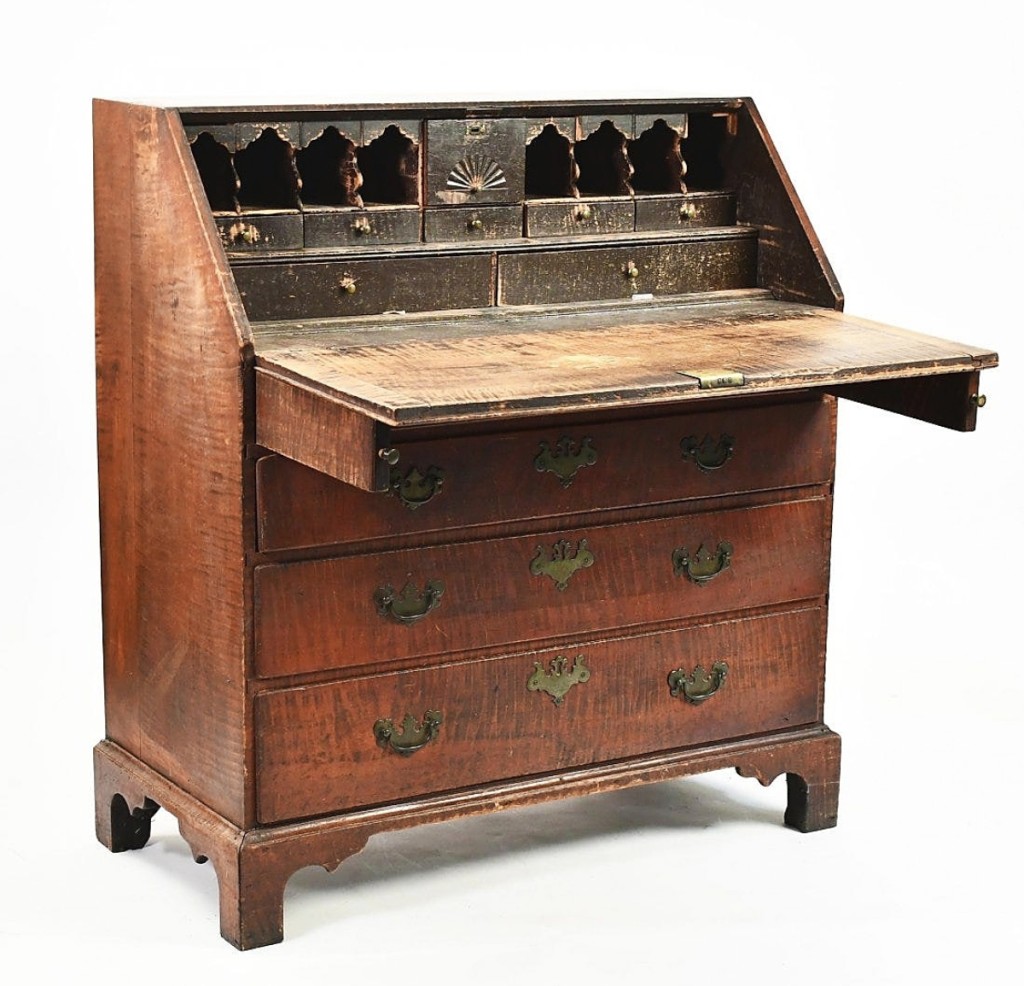
This was the highest priced piece of American furniture in the sale. The untouched, red painted tiger maple slant front desk had been sold by Skinner in the 1980s for $30,000, according to Bill Smith. This time it went out for $20,600.
Woodenware included in the sale was choice. An exceptional 13-inch red-painted burl bowl with a good provenance sold for $10,300. The catalog stated that it had come from the collection of Chip Myers in 1986. “The burl bowl was given to Reverend Campbell by Mohawk Indians when he had to vacate his land, to become part of St Regens/Reservation.” A lot of three small bowls, including a 5-inch covered burl bowl, sold for $3,835 and two small carved make-do mirrors brought $2,714. A 36-hole redware candle-mold in a wooden frame marked J. Walker H. Bloomfield, with cut out base in old red paint, realized $1,535, and a carved oak bible box dated 1695, with four small drawers, brought a reasonable $472.
There may have been some bargains among the paintings sold. A 39-by-56-inch signed landscape by Benjamin Champney (1827-1907) went out for $2,596. It included cows and sheep, with mountains in the background, possibly Mount Washington. Bringing the same price was a Hudson River landscape attributed to either James or William Hart, both Scottish-born painters of the late Nineteenth Century. A painting by Ralph Cahoon (1910-1982), which must have had a story to tell, sold for $7,080. It depicted a mermaid stretched out in front of four members of the Dartmouth College rowing team wearing circa 1930 swimsuits. It was titled “The Dartmouth Crew.” As he was selling it, Smith guessed that it may have been commissioned for the team.
The sale included two documents thought to have been signed by George Washington when they were cataloged. One was a 1799 handwritten and signed letter written to Major Hepburn and Dundas in Alexandria concerning a piece of property. It was found by the current owner in a book about the presidents of the United States in his library. It sold for $14,160. Before the sale, Smith said he had it read it over the phone to several interested bidders. The second item, which was withdrawn from the sale, was allegedly a promissory note signed by Washington. Smith said it had been determined to be a Nineteenth Century forgery by an accomplished forger, Robert Spring. Spring was born in England but settled in Philadelphia in 1858 and became an antiquarian bookseller. And forger. He used blank pages from the old books, and ink that he devised himself. Prominent men like Washington and Benjamin Franklin were among his favorite subjects. He often pretended to be a woman who had to sell family papers to support “herself.” He was eventually arrested in 1869, convicted and sent to jail, dying in 1876.
Prior to the sale, Smith commented, “The online sales are bringing us local people that we have not done business with in the past. It was a surprise to see that. For the most part, they’re younger buyers who are comfortable with social media, which we’re using more and more, and they’re buying directly online.” And after the sale, he was obviously pleased with the results. “Selling online requires more work than the way we used to do business. We’re taking several pictures of each item, and we’re being careful to describe condition as accurately as we can. We’re dealing with postsale storage and collection but it’s worth the extra work. But it’s not all internet – we have a sale coming up that will be live only, no internet, no phone. The way auctions used to be.”
Prices given include the buyer’s premium as stated by the auction house. For more information, www.wsmithauction.com or 603-675-2549.

